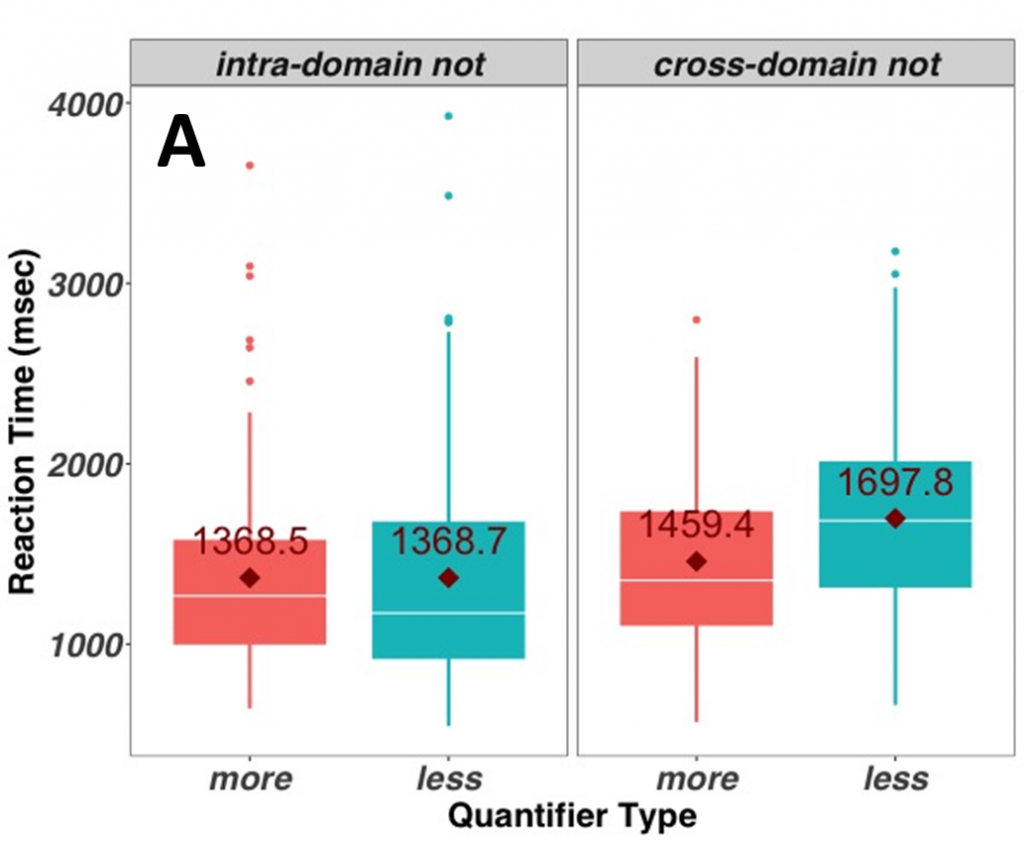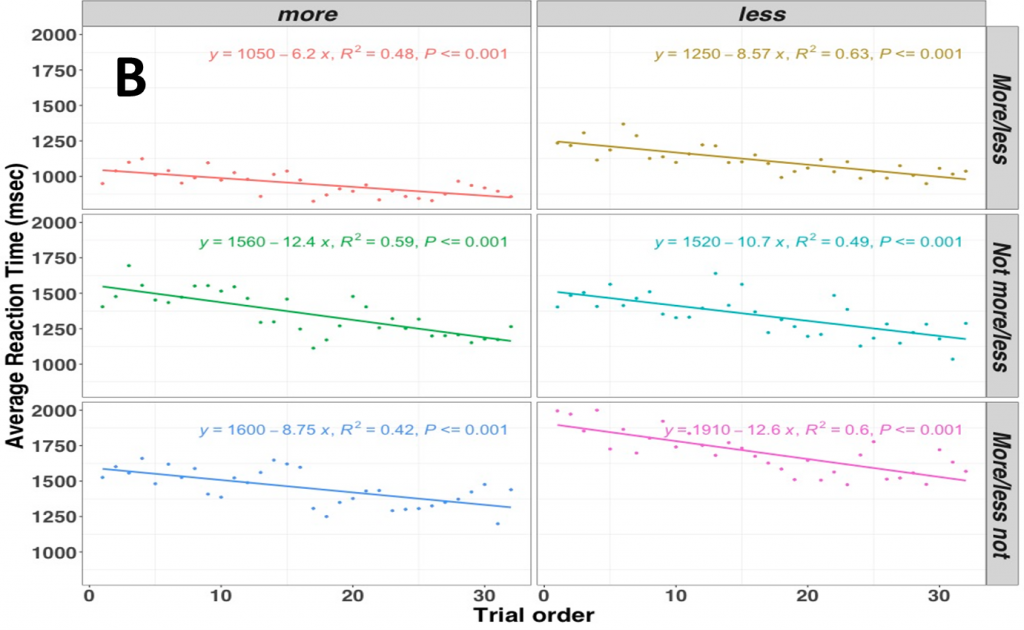Part of the meaning of sentences in natural language is derived from their logical properties. In previous work, we isolated logical processing from grammatical processing: We investigated how the brain analyzes sentences that grammatically simple but logically complex, and showed that logical complexity has a distinct neural basis. In that study, participants were asked to (1) listen to a sentence (e.g., more than half of the dots are blue); (2) look at a picture with dots of two colors and quantities (e.g., 5 yellow dots and 20 blue dots); and (3) decide whether the sentence was true or false for the picture. Sentences like Less than half of the dots are blue took longer to process than More than half of the dots are blue, due to a negation hidden within the word less (Deschamps et al., 2015; Grodzinsky et al., 2020; Agmon et al., 2023).
This paper continued the project, using sentences in which differed in their logical complexities in a manner opposite to that above: a crucial part introduced sentences that were more grammatically complex, but logically simpler. Adding the negation word not to each of the above sentences, we obtained the logically complex Not more than half of the dots are yellow, and its counterpart Not less than half of the dots are yellow which is grammatically complex but logically simpler, as it contains two negations (not and less), that cancel each other out (NB: we also used negations in a different sentential position – More than half of the dots are not yellow, and its counterpart Less than half of the dots are not yellow, both of which are complex logically and grammatically).
What determines perceptual complexity – grammar or logic? Do they interact? Do we learn how to deal with the added complexity through repeated experience? To answer these questions, we measured decision times, expecting those for sentences with two negations to be shorter than for sentences with one, and on a par with sentences that contain zero negations. This was indeed the case: Logical complexity affected processing in a manner that was independent of the sentence’s visible structure (0NEG=2NEG<1NEG).
We also showed that these effects are not due to immediate intra-session learning. These results help to substantiate the centrality and independence of logical considerations in the brain’s language processing.

Image A illustrates the subtle ways in which a sentence’s negation value (Monotonicity ) affects processing. The left panel shows two experimental conditions (that contain more or less ) in which response times for Upward Monotone sentences (orange) are very similar to those of their Downward counterparts (green). The right panel shows that when the syntactic configuration is carefully selected , response times for Upward Monotone sentences are significantly faster than for their Downward counterparts. This difference derives from a highly specific theory of Monotonicity . Red diamonds indicate the means per condition.
Image B shows how the effects shown in Image A are not a result of learning.

In each of the six panels, the response times decrease with trial number (downward slope for all graphs). However, the slopes cannot be used to distinguish between sentences types (i.e., the slopes are similar across all experimental conditions). This indicates that learning rates do not favor a particular logical type.
*Link will be published soon
